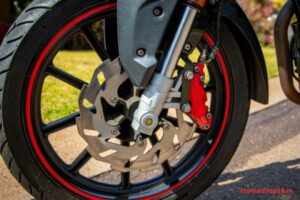What is IDV in Bike Insurance (2025)? Complete Guide, Pros, Cons, and Real Experiences
What is idv in bike insurance in 2025 If you’re buying or renewing your two-wheeler insurance, one of the most important terms you’ll come across is IDV — short for Insured Declared Value.
In simple words, IDV is the current market value of your bike — the amount your insurer agrees to pay if your bike is stolen or damaged beyond repair. It represents the maximum claim amount you can receive in case of a total loss.
Many first-time policyholders get confused by this term. But once you understand what IDV means and how it’s calculated, you can make smarter insurance choices and avoid overpaying premiums.
2. What Exactly is IDV?
IDV (Insured Declared Value) is the sum insured amount mutually agreed upon by you (the vehicle owner) and your insurance company at the start of the policy.
It is basically your bike’s current market value, calculated after considering depreciation based on age and model.
If your bike is stolen or totally damaged in an accident, your insurer will pay you the IDV amount, which is considered the maximum compensation under your policy.
In case of theft or total loss, 100% of the IDV is paid.
Higher IDV = Higher Premium (and vice versa).
You can choose your IDV within the range offered by the insurance company.
3. Example of IDV in Action
Suppose you own a 4-year-old bike. The insurance company, after evaluating its brand, CC (engine capacity), and condition, gives an IDV range between ₹30,000 to ₹40,000.
If you select ₹40,000 as the IDV, your premium will be higher, but your claim payout in case of theft or total loss will also be higher.
4. How is IDV Calculated in 2025?

Insurance companies calculate the IDV based on guidelines defined by the Indian Motor Tariff Act. Several factors are taken into account:
- Bike registration details
- Registration date & location
- Ex-showroom price
- Manufacturer and model
- Vehicle description
- Additional accessories not included in the base price
The Formula:
[
\text{IDV} = (\text{Manufacturer’s listed price} – \text{Depreciation}) + (\text{Accessories value} – \text{Depreciation})
]
So, IDV = Current Market Value of the Vehicle (minus depreciation).
It excludes registration cost, road tax, and insurance charges.
5. Factors Affecting IDV of Your Bike
A. Age of the Two-Wheeler
The older your bike, the lower its market value and, therefore, the lower its IDV.
Here’s how depreciation impacts the IDV calculation:
| Age of Vehicle | Depreciation on IDV |
|---|---|
| Up to 6 months | 5% |
| 6 months – 1 year | 15% |
| 1 – 2 years | 20% |
| 2 – 3 years | 30% |
| 3 – 4 years | 40% |
| 4 – 5 years | 50% |
B. Make and Model
Premium bikes or high-end brands have higher IDVs due to their resale value and expensive parts.
C. City of Registration
Urban bikes (like in Delhi or Mumbai) may have slightly higher IDVs compared to rural areas due to higher market prices.
D. Condition and Modifications
Aftermarket accessories (like alloy wheels, security systems, or custom paint jobs) can increase IDV if declared properly.
E. Fuel Type
Petrol, electric, or hybrid models may have different depreciation rates.
6. IDV in Real-Life Scenarios
Example 1: Theft Case
A Pulsar 150 worth ₹75,000 (on-road) was stolen after 3 years.
The insurance company paid ₹45,000 — the IDV value applicable for that year.
This shows that as your vehicle ages, its IDV keeps depreciating, and so does your compensation in case of total loss.
Example 2: Total Damage
A user’s 5-year-old scooter met with an accident and was declared “total loss.”
The insurer paid the IDV (₹28,000) as per the depreciated value — not the price they originally bought it for.
These examples show that IDV represents current value, not purchase value.
7. IDV for Older or Vintage Vehicles
For bikes or cars older than 5 years, the IDV is decided mutually between the insurer and the policyholder.
The insurer may rely on:
- Authorized dealer valuation
- Insurance surveyor’s inspection
For vintage or discontinued models, IDV is finalized based on mutual agreement since there’s no active market price available.
8. Importance of IDV in Bike Insurance
Why IDV Matters:
- It determines your insurance premium.
- It defines the maximum claim payout.
- It affects the resale and renewal value of your policy.
- It ensures fair compensation for your bike’s real worth.
A properly chosen IDV ensures that you neither overpay premiums nor get under-compensated during claims.
9. IDV in Relation to Policy Types

A. Third-Party Insurance
IDV does not apply to third-party-only policies because they cover liability to others, not your own vehicle.
B. Comprehensive Insurance
Here, IDV becomes crucial as it defines how much you’ll be paid for:
- Theft
- Fire damage
- Accidents
- Natural or man-made disasters
How to check bike insurance validity in 2025
10. Real Customer Experiences with IDV
Experience 1: Smooth Claim Settlement
“When my bike was stolen, the insurer settled the full IDV amount within 20 days. I had selected a slightly higher IDV, so it really helped me recover more.”
Experience 2: Overpayment Regret
“I had chosen the highest IDV for my old bike thinking I’d get more value, but the premium was unnecessarily high. In hindsight, mid-range IDV would have been better.”
Experience 3: Wrong Fixation
“My insurer undervalued my bike’s IDV during renewal. Always check your previous policy’s value and negotiate if it seems too low.”
11. Pros and Cons of Higher or Lower IDV
| Aspect | High IDV | Low IDV |
|---|---|---|
| Premium | Higher | Lower |
| Claim Amount | Higher payout during total loss | Lower payout |
| Affordability | Costlier annually | Budget-friendly |
| Risk of Underinsurance | Low | High |
| Best For | New or premium bikes | Older bikes nearing resale |
Pro Tip:
Choose an IDV close to the bike’s actual resale value, not the highest possible figure.
12. Comparison: IDV vs. Market Value vs. Invoice Price
Is Aditya Birla Health Insurance Good in 2025?
| Term | Meaning | Included in IDV? |
|---|---|---|
| Invoice Price | Original price at purchase (including taxes) | ❌ No |
| Market Value | Current resale value in open market | ✅ Yes |
| IDV | Market value after accounting for depreciation | ✅ Yes |
| Registration & Road Tax | Fees paid to RTO | ❌ No |
13. Buying Guide: How to Choose the Right IDV
Step 1 – Understand Your Bike’s True Value
Check the resale value on platforms like OLX or through your local dealer to estimate market worth.
Step 2 – Check Insurer’s IDV Range
Every insurer provides a range (e.g., ₹30,000–₹40,000). Choose within that band wisely.
Step 3 – Balance Premium and Protection
- For new bikes, select a slightly higher IDV.
- For older bikes, select mid-range to avoid high premiums.
Step 4 – Renew Carefully
Don’t let the insurer reduce your IDV drastically at renewal — negotiate based on your bike’s actual condition.
Step 5 – Keep Records Updated
Ensure that any modifications or accessories are declared and covered.
How to claim insurance for car damage
14. FAQs About IDV in Bike Insurance (2025)
Q1. What happens if I choose a lower IDV?
You’ll pay a lower premium, but in case of theft or total loss, you’ll receive a smaller claim amount.
Q2. Can I change the IDV during renewal?
Yes. You can request a change within the insurer’s allowed range during policy renewal.
Q3. Does IDV affect No Claim Bonus (NCB)?
No, NCB is based on claim history, not IDV.
Q4. Is IDV the same for all insurers?
No. Different insurers may calculate slightly different IDV values based on their internal pricing.
Q5. Does IDV include accessories?
Only if declared. Accessories added after purchase can be included by adding their value minus depreciation.
Q6. What’s the depreciation rate used for IDV?
It ranges from 5% for new bikes to 50% for five-year-old bikes, as per the Indian Motor Tariff guidelines.
15. Expert Tip: Choose Wisely
- Too High: Unnecessarily high premiums
- Too Low: Insufficient claim value
The right IDV is one that reflects your bike’s actual market worth — not what you paid for it years ago.
16. Final Thoughts
The Insured Declared Value (IDV) is not just a technical term—it’s the financial backbone of your bike insurance policy. It defines how much protection your two-wheeler truly has.
In 2025, with rising vehicle costs and new insurance structures, understanding IDV helps you:
- Get fair compensation during total loss
- Save on unnecessary premium costs
- Make informed renewal decisions
As one bike owner said:
“I used to ignore IDV thinking it’s just a number. But when my bike was stolen, that number decided how much I got back. Now, I always check it first.”
When renewing or buying bike insurance, always check your IDV value carefully.
It’s the difference between feeling secure — and being underinsured.





